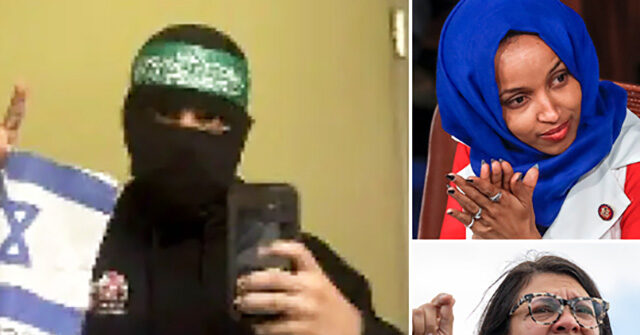The recent case involving Mohamad Hamad, a 23-year-old Lebanese-American, and Talya Lubit, a 24-year-old Jewish activist, has drawn significant attention for its implications related to hate crimes and the Palestinian-Israeli conflict. According to reports, Hamad, who is being described as a “Hamas operative,” was arrested along with Lubit in connection to acts of vandalism that targeted Jewish synagogues and cultural centers in Pittsburgh. Allegations against the pair include spraying pro-Palestinian graffiti, including statements asserting that Jewish organizations fund genocide and displaying symbols associated with Hamas. The vandalism occurred at the Chabad of Squirrel Hill synagogue, inflicting damage and igniting discussions about political rhetoric and its potential for inciting acts of violence against Jewish communities.
Investigative efforts led by the FBI and local police have unveiled a troubling narrative surrounding the motivations of the accused individuals. Surveillance footage showed Hamad’s vehicle near the crime scenes, and evidence emerged indicating that he purchased the spray paint the day before the vandalism was carried out. Text messages between Hamad and Lubit reveal that they had discussed their intentions to select Jewish targets, showcasing a premeditated effort to attack the community. In one disturbing message, Hamad referred to himself as a “Hamas operative” and even shared an image of himself wearing a Hamas symbol. Such indictments of intent suggest that the acts were not simply expressions of free speech but rather targeted crimes against individuals based on their religious identity.
Hamad and Lubit have been formally charged with damaging religious property and conspiracy to commit offenses against the United States, highlighting the serious legal repercussions that can follow such actions. U.S. Attorney Eric G. Olshan emphasized that defacing religious property constitutes a crime that undermines communities’ abilities to practice their faith securely. The legal context of the case raises critical questions about the intersection of political expression and hate crimes, and whether individuals can invoke their beliefs as a shield against accountability for actions that may incite violence or spread division.
Interestingly, both suspects have demonstrated a complex relationship with their identities and political ideologies. Hamad participated in the Pennsylvania Air National Guard, reflecting a commitment to service, while simultaneously supporting controversial political figures through financial contributions. Reports indicate that he donated a nominal amount to Congresswoman Ilhan Omar and another to Rashida Tlaib, both members of the so-called “Squad,” who have faced scrutiny for comments perceived as anti-Israel. In contrast, Lubit’s identity as a Jewish anti-Israel activist adds another layer to the narrative, as she allegedly underwent a transformation in her views toward Jewish identity leading up to the vandalism, feeling increasingly disconnected from her heritage.
The matter of Lubit’s communications further complicates the scenario—her messages reveal a psychological struggle with her Jewish identity, which she claimed was shifting toward viewing fellow Jews as adversaries. This internal conflict raises broader questions about identity, belonging, and the potential for self-alienation within communities facing external pressures. The juxtaposition of her upbringing against her emerging beliefs creates a disturbing portrait of radicalization that can occur even within marginalized groups.
The situation encapsulates a crucial moment in the ongoing discourse surrounding the Israeli-Palestinian conflict and the effect of extremist ideologies on individuals and communities. The use of graffiti to express political sentiments reflects a trend of escalating tensions that may lead to acts of violence and vandalism. With members of Congress facing backlash for divisive statements, it becomes increasingly clear how political rhetoric can spill over into personal actions, prompting legal responses and community outrage. Ensuring the civil rights of all communities, especially in contexts fraught with historical divides, remains a key priority for local and federal authorities as they navigate these complex and troubling issues.

